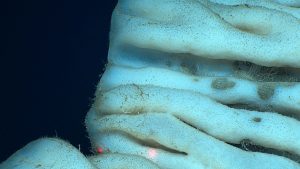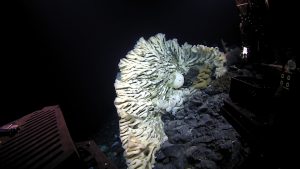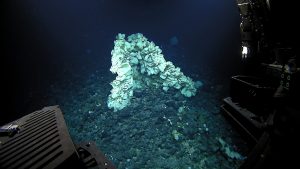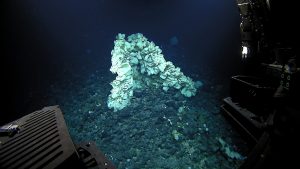‘Largest Sponge in the World?’
The largest sponge known in the world was found at a depth of 7,000 feet within the within Papahānaumokuākea Marine National Monument during a deep-sea expedition last summer.
Now, the sponge has been detailed in the scientific journal Marine Biodiversity this week.
The sponge was close to 12 feet long and seven feet wide, comparable in size to a minivan.
NOAA’s Okeanos Explorer first documented the sponge during an expedition to explore deep-water habitats in the Monument using remotely-operated vehicles at depths ranging between 2,300–16,000 feet.
“The largest portion of our planet lies in deep waters, the vast majority of which has never been explored,” said Papahānaumokuākea research specialist Daniel Wagner, Ph.D, science lead of the expedition with NOAA’s Office of National Marine Sanctuaries. “Finding such an enormous and presumably old sponge emphasizes how much can be learned from studying deep and pristine environments such as those found in the remote Papahānaumokuākea Marine National Monument.”
Not much is known about the lifespan of sponges, however, some massive species found in water less than 100 feet have been estimated to live over 2,300 years.
The sponge was captured on high-definition video during a remotely-operated vehicle dive on a ridge extending from a seamount south of Pearl and Hermes Atoll within Papahānaumokuākea. Scientists from NOAA’s Office of National Marine Sanctuaries, NOAA’s Office for Exploration and Research, and the University of Hawaiʻi described the sponge after a year of study.
“The largest sponge in the world?” can be read online.





















